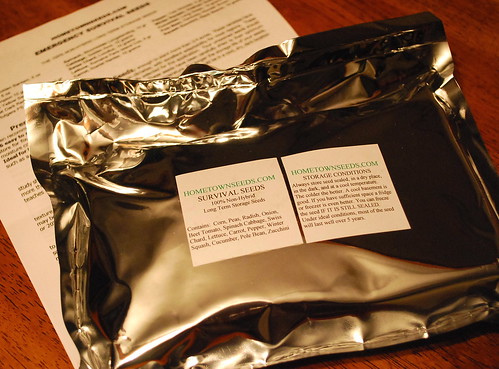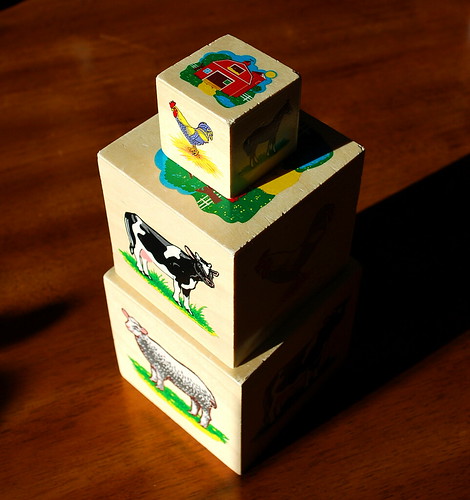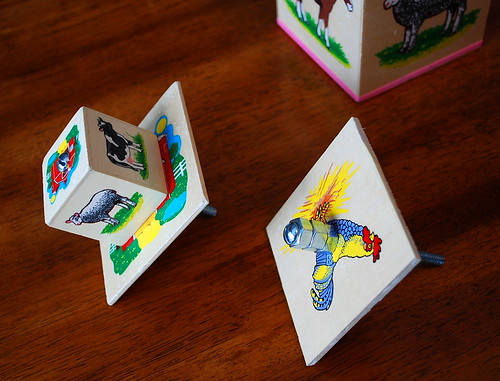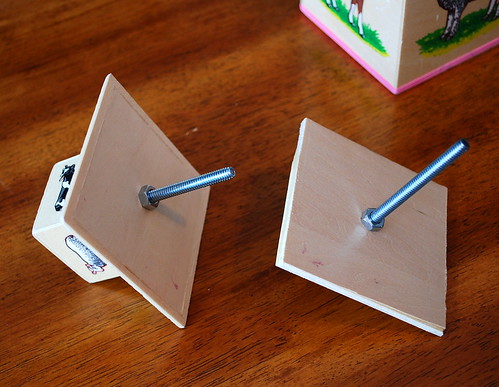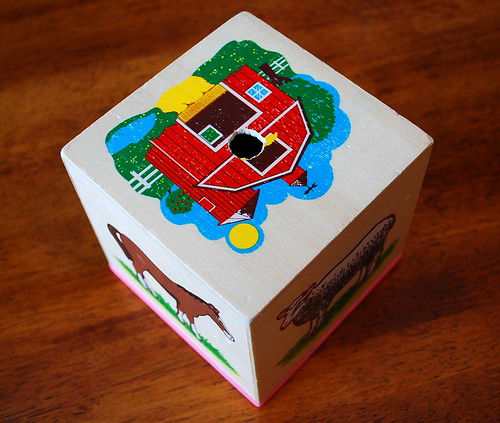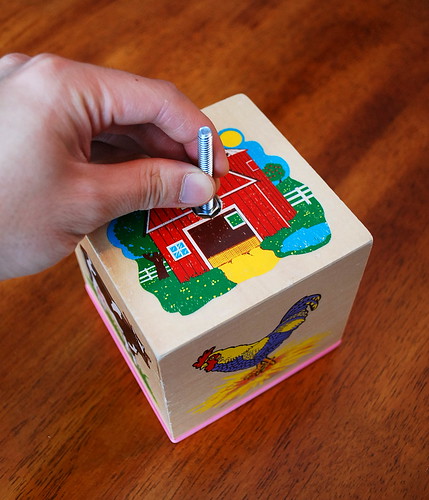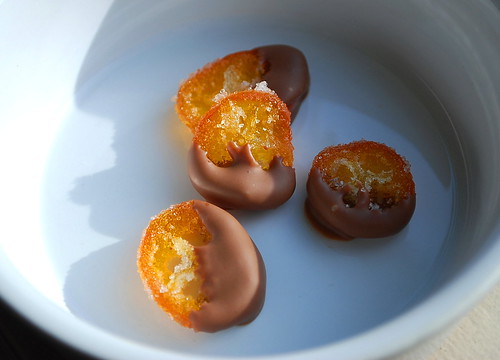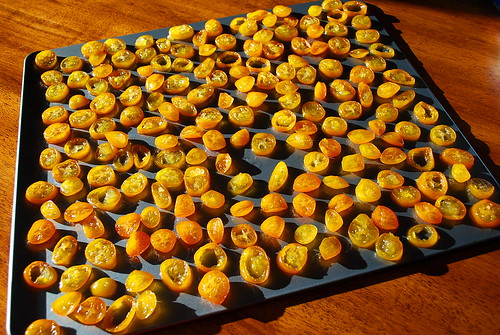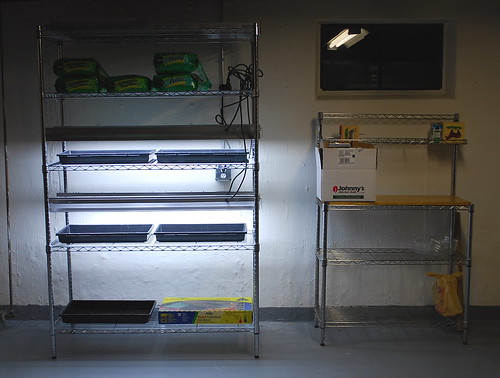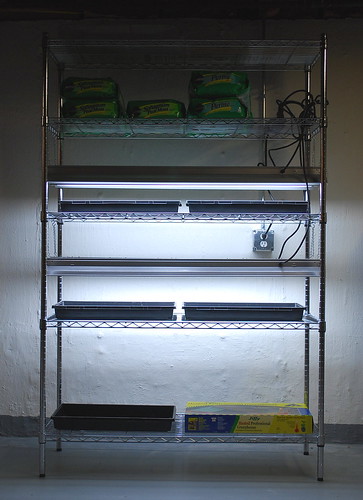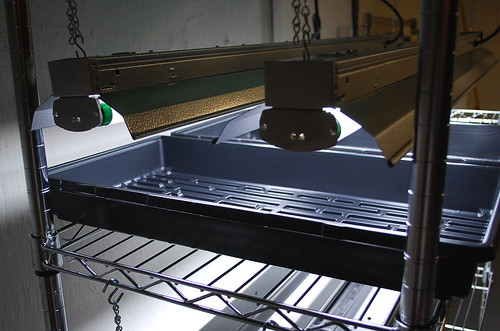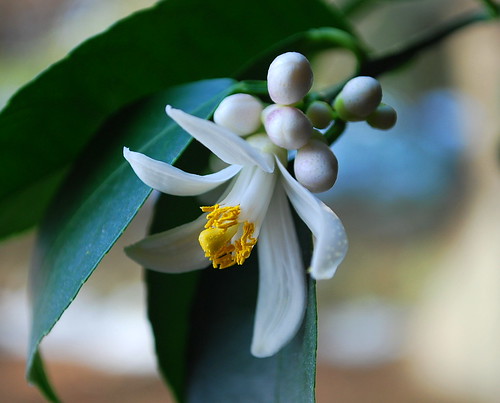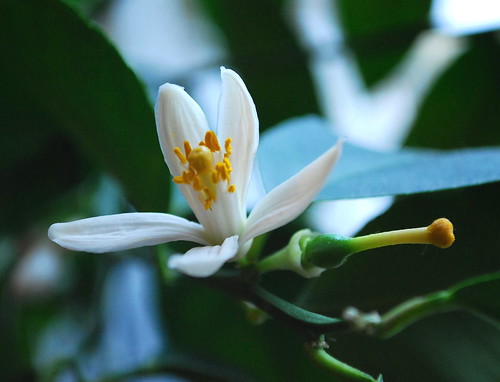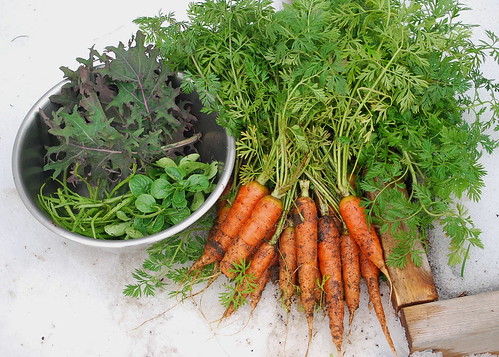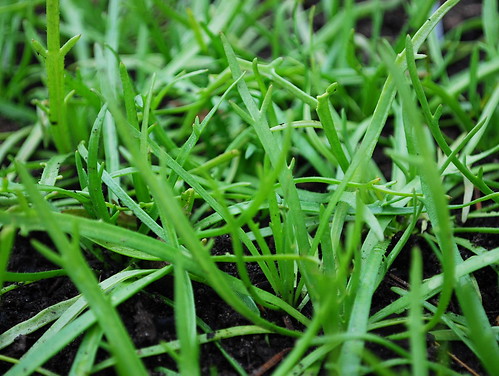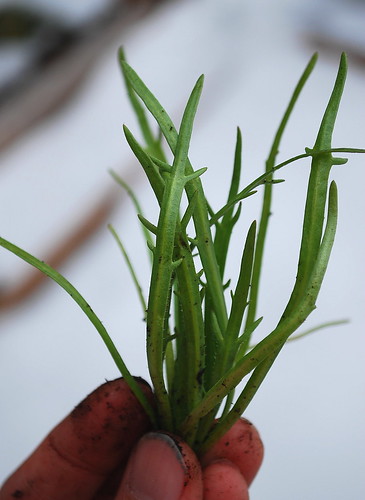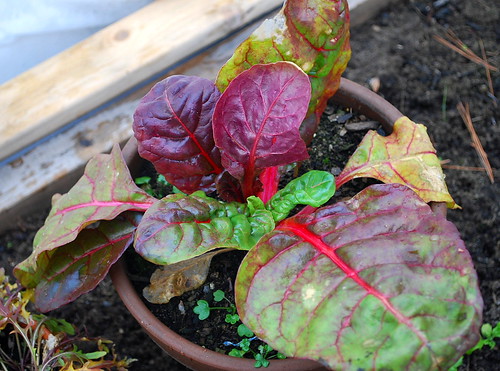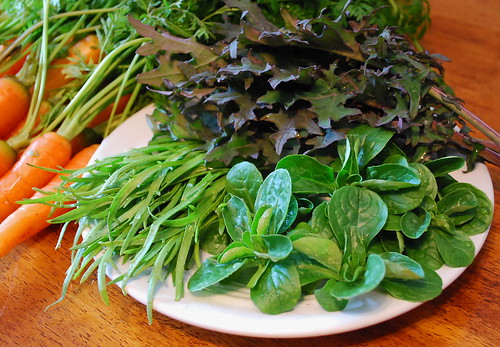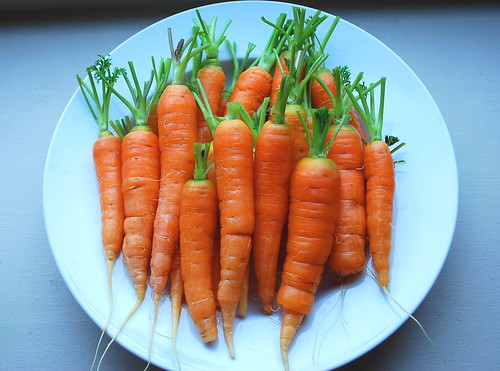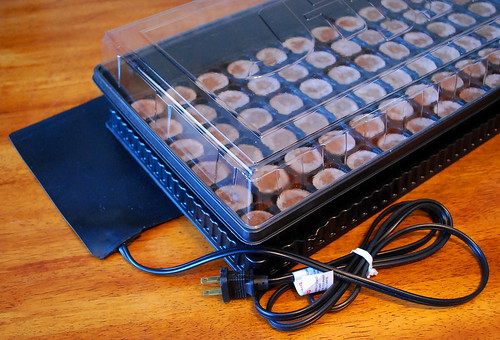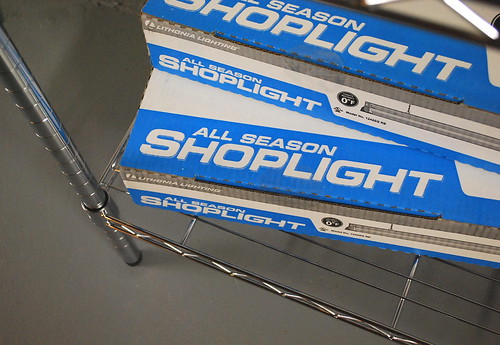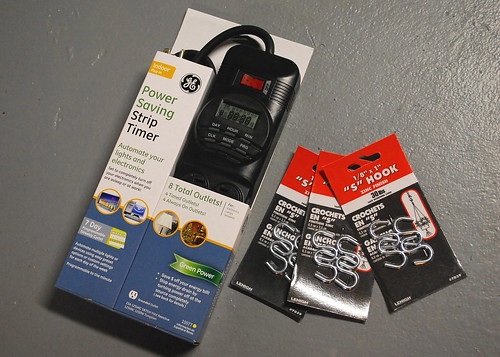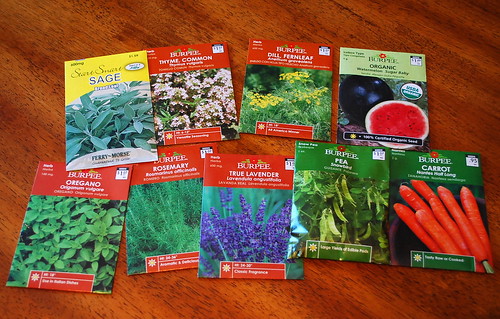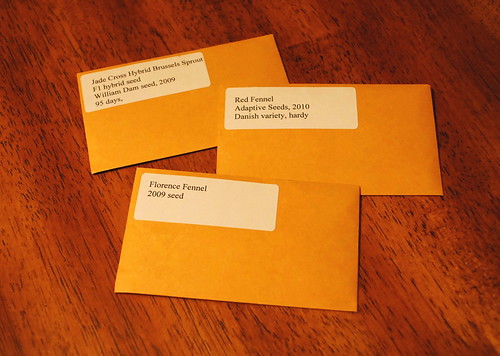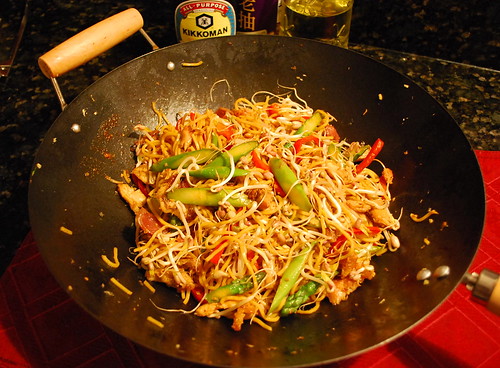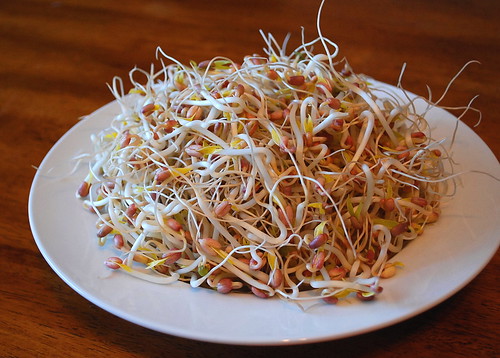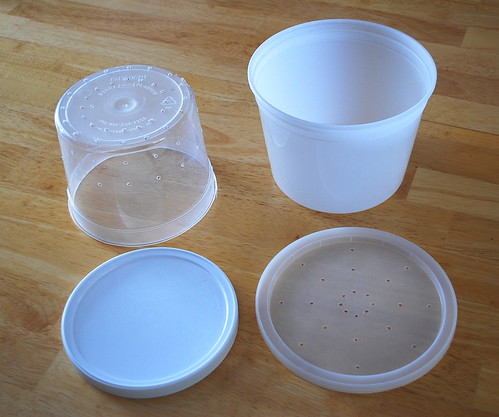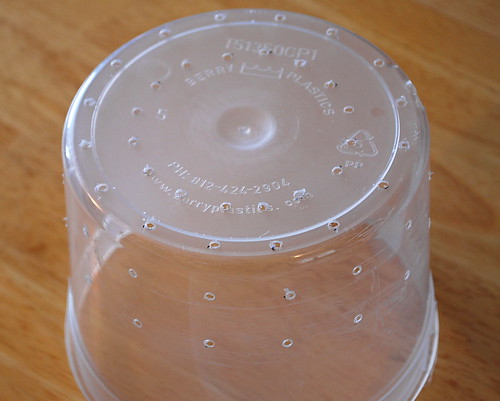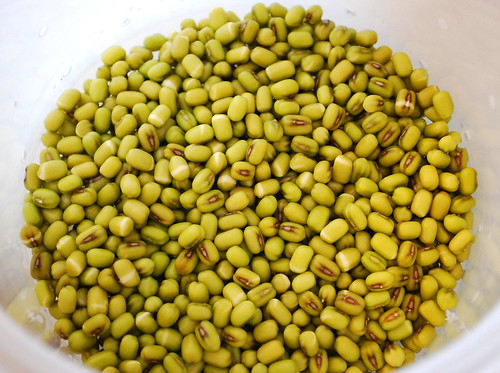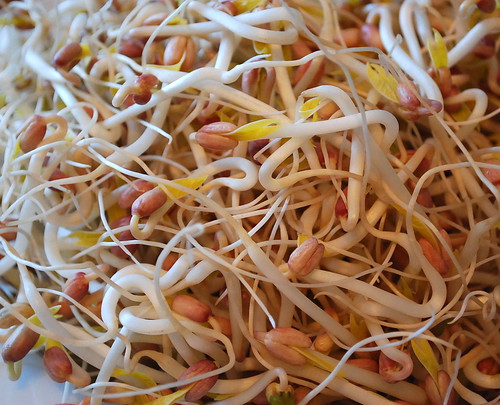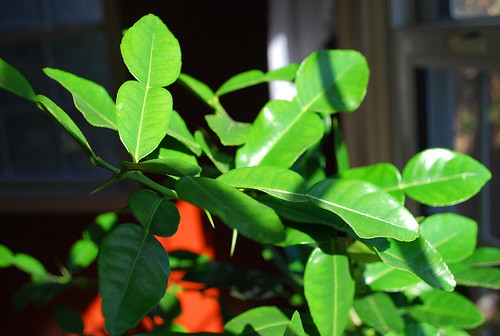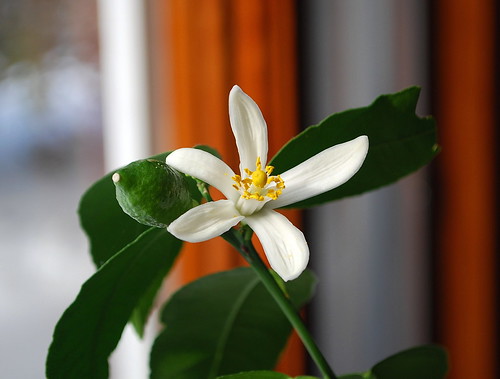
If I were to write a cookbook one of these days, this would probably be one of the first recipes to make it into the manuscript. I have to admit that I am very proud of this one, and it just so happens to be one of Marc's favorites. I have been making these pork and shrimp potstickers for many years, but only recently decided to jot down proper measurements. Hopefully, some of you will decide to give this recipe a try. (Also, I'd like to dedicate this post to my blogger friend,
Daphne, who loves all things Dim Sum.)
Pork and Shrimp Potstickers Recipe1 lb ground pork
1/2 lb diced shrimp
1/2 cup carrots, finely diced
2/3 cup chopped scallions
2 cups cabbage, sliced thin
1/3 cup chopped cilantro
1/2 cup chopped wood ear mushrooms (reconstituted in warm water) or fresh Shitake
1 tablespoon minced ginger
2 cloves garlic, minced
1/4 cup tapioca starch (or cornstarch)
2 tablespoons soy sauce
2 tablespoons oyster sauce
2 teaspoons dark sesame oil
1 tablespoon plus 1 teaspoon sugar
1/2 teaspoon salt
1/2 teaspoon pepper
70 Chinese white dumpling wrappers (purchase the round ones, which can be found in the refrigerated section of the Asian market)
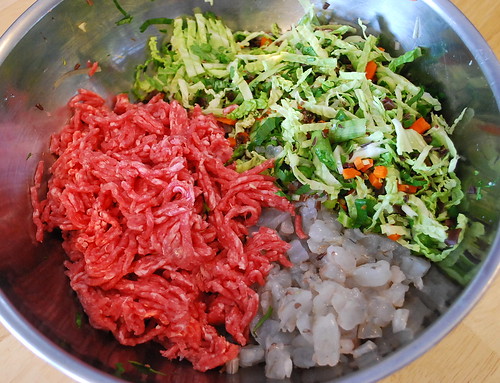
1. Combine all of the ingredients into a large bowl and mix thoroughly.
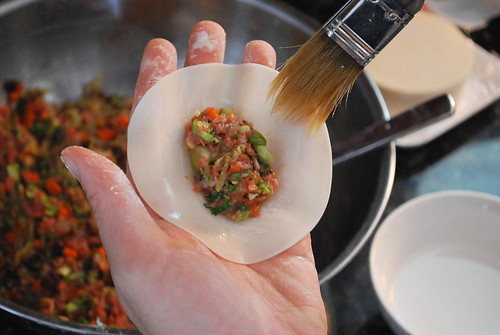
2. Fill a small bowl with water and set aside. Working with one wrapper at a time, place about a tablespoon of filling into the center. Brush the exposed edges of the wrapper with some of the water.
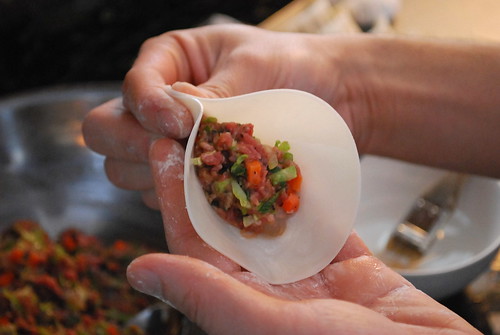
3. Begin folding the dumpling in half by pinching the top of the wrapper to form a crease.
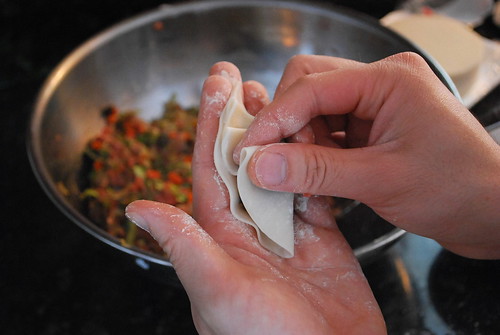
4. Lay the dumpling flat on your palm. Using your thumb and index finger, pinch a bit of the wrapper below the crease and drag it to within 1/2 inch of the top. Pinch again and drag this bit to within 1/2 inch of the last one. Repeat this several times until you've created 4 or 5 pleats on one side of the dumpling.
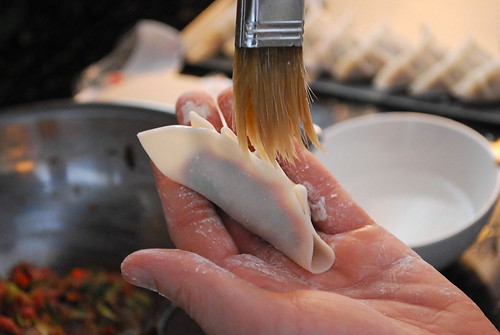
5. Turn you dumpling until the loose seams point upward. Take your wet pastry brush and lightly drag it across the seams.
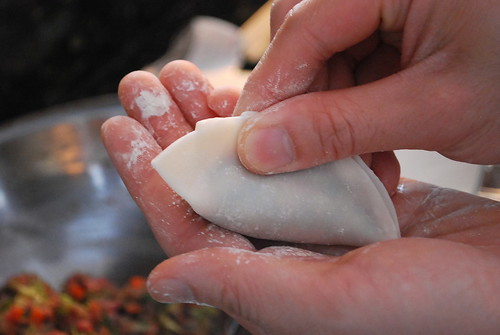
6. Again, using your thumb and index finger, press the moistened seams together until the dumpling is completely sealed.

What you end up with is a dumpling that is crescent-shaped and scalloped on one side.
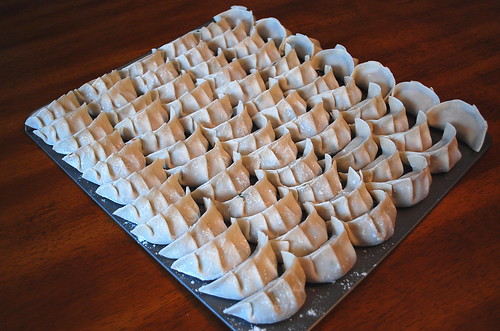
As you can see, this recipe makes quite a bit - anywhere between 65 and 70 potstickers. To freeze them, I put the whole tray into the freezer. Only after they are frozen solid do I place them into freezer bags. This prevents the dumplings from becoming one solid mass.
The perfect potsticker is one that is crispy on the bottom and slightly chewy on top. To achieve this perfection, the dumpling must first be fried and then steamed, a process that is easier than it sounds.
7. In a
non-stick frying pan, heat 2 or 3 tablespoons of canola oil on medium heat. One at a time, add the dumplings until they fill the pan. (If you're unsure about which size pan to use, count the number of dumplings you plan to serve and then choose a non-stick pan into which they will all fit snugly, touching one other, and in a single layer. Also, you do not have to defrost the dumplings first. They can go straight into the pan from the freezer.)
8. Fry on medium heat until the bottoms are golden brown. Once they've reached this point, add enough water to almost cover the dumplings. (I would say that the dumplings should be covered by 3/4's of the way up, leaving the pinched tops exposed. Adding too much water will cause the wrappers to become overcooked.)
9. Cover the pan and raise the heat to medium high until the water boils rapidly. Then lower the heat to medium and cook until most of the water has evaporated (about 10-12 minutes). At this point, pay very close attention as you want to cook the potstickers until all of the water is gone and the bottoms are crispy again (another 5 to 7 minutes). They can burn very quickly once all of the water has evaporated so don't leave them unattended. When they are done, uncover and shake the pan a bit to loosen the potstickers. You can remove them individually or invert the pan onto a serving dish.
Orange Ginger Dipping Sauce Recipe1 teaspoon of canola oil
1 tablespoon of ginger, finely minced
2 cloves of garlic, finely minced
2 cups of orange juice (if you are using fresh oj, add 1 teaspoon of grated orange zest as well)
1/2 cup of brown sugar
1/4 cup of soy sauce
2 teaspoons of white vinegar
1/2 teaspoon of dark sesame oil
1/2 teaspoon of ground chili paste (optional)
pepper to taste
garnish with chopped scallions (optional)
In a small sauce pan, heat the canola oil on medium heat. Add the ginger and garlic and stir for about 10 to 15 seconds until the flavors are released. Then add all of the remaining ingredients. Bring the sauce to a boil and then lower the heat to simmer for 10-12 minutes. Let the sauce cool for another 10 minutes before serving.

I can't say that this recipe is quick or fool proof, but once you get it right, it's definitely worth the time and effort. Enjoy!
